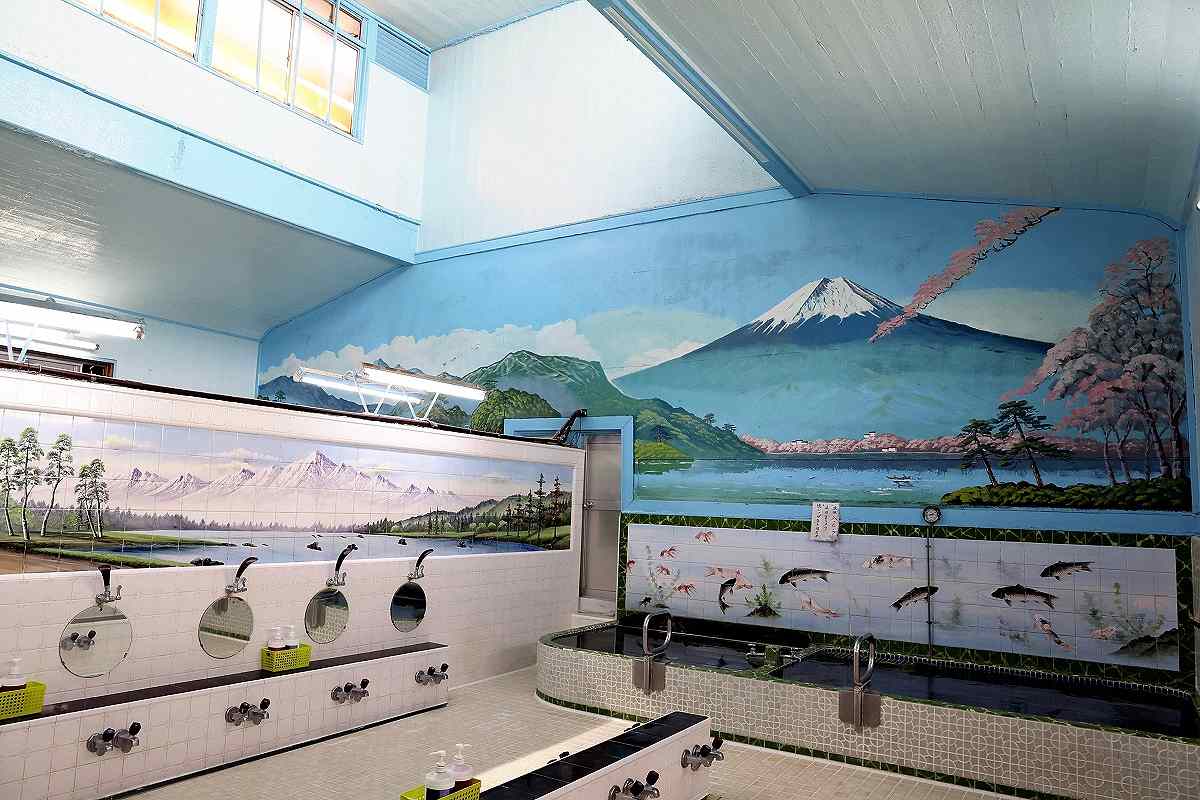
A large painting of Mt. Fuji is a popular feature of the Atami-yu public bathhouse in Shinjuku Ward, Tokyo.
1:00 JST, September 30, 2023
The Atami-yu public bathhouse in Shinjuku Ward, Tokyo, has been helping people unwind for more than 70 years.
The Kagurazaka-based facility was once a central part of the local kagai district, which served as a base for geisha entertainers.
Atami-yu features a gable roof, which was a common feature in sento — public bathhouses — during the Showa period (1926-1989).
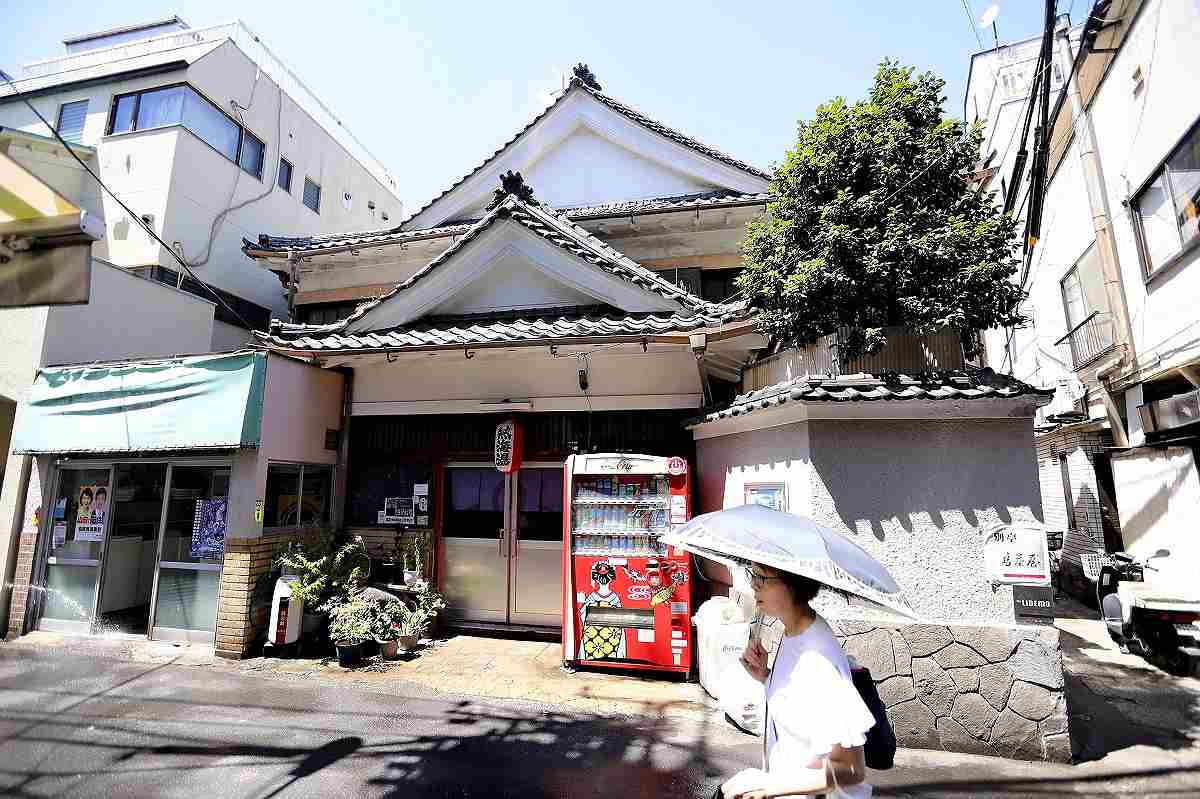
The building has a large tiled roof.
Upon passing through the noren curtains at the entrance, visitors remove their shoes and head toward the men’s or women’s changing rooms, which are separated by a 2-meter-high wall.
Patrons are greeted by the bathhouse’s second-generation owner Hiroshi Yoshida, 80, or his wife Akemi, 71, who sit at the bandai front desk when the facility opens at 2:45 p.m.
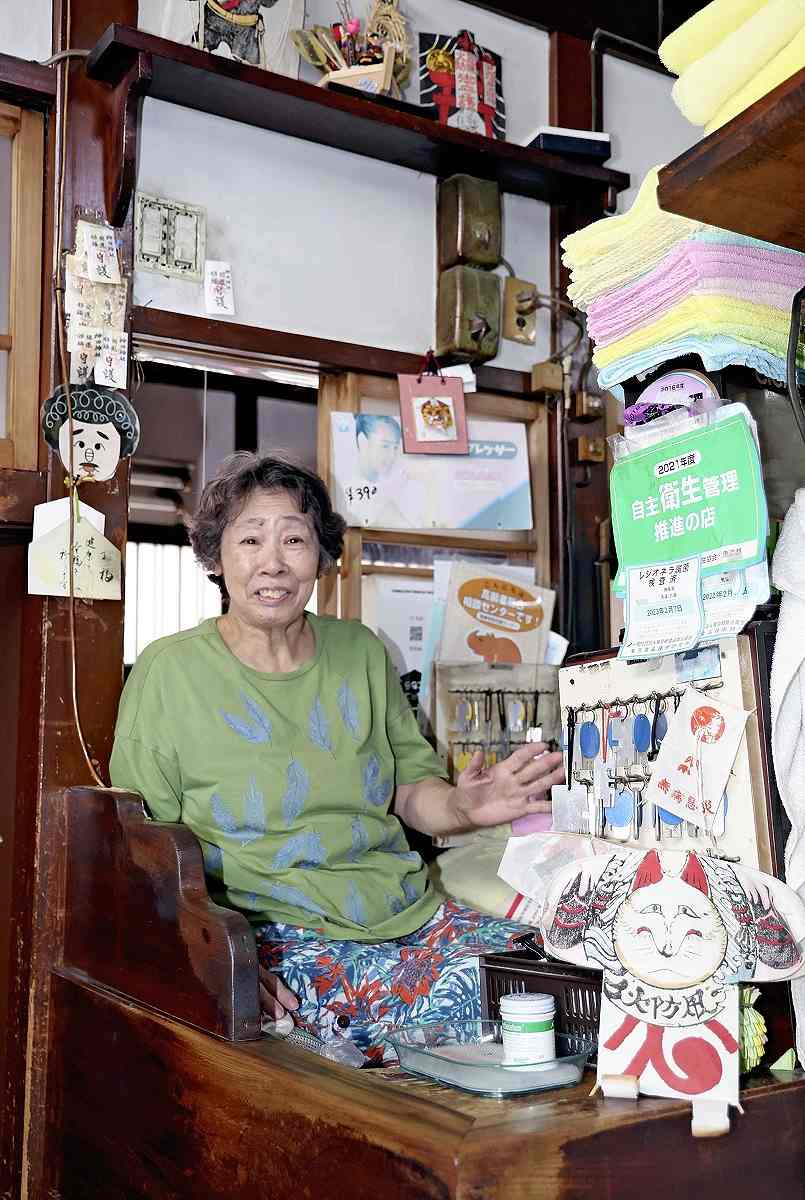
Akemi Yoshida welcomes customers at a bandai front desk.
When Atami-yu — named after a well-known hot spring resort in Shizuoka Prefecture — first started operating, Kagurazaka geisha would visit the bathhouse twice a day. They would take a bath before applying makeup for work and do so to remove their makeup after work. Locals, too, frequently patronized the bathhouse. However, around the time of the 1964 Tokyo Olympics, the facility began to see a decline in business, as more and more homes were outfitted with baths.
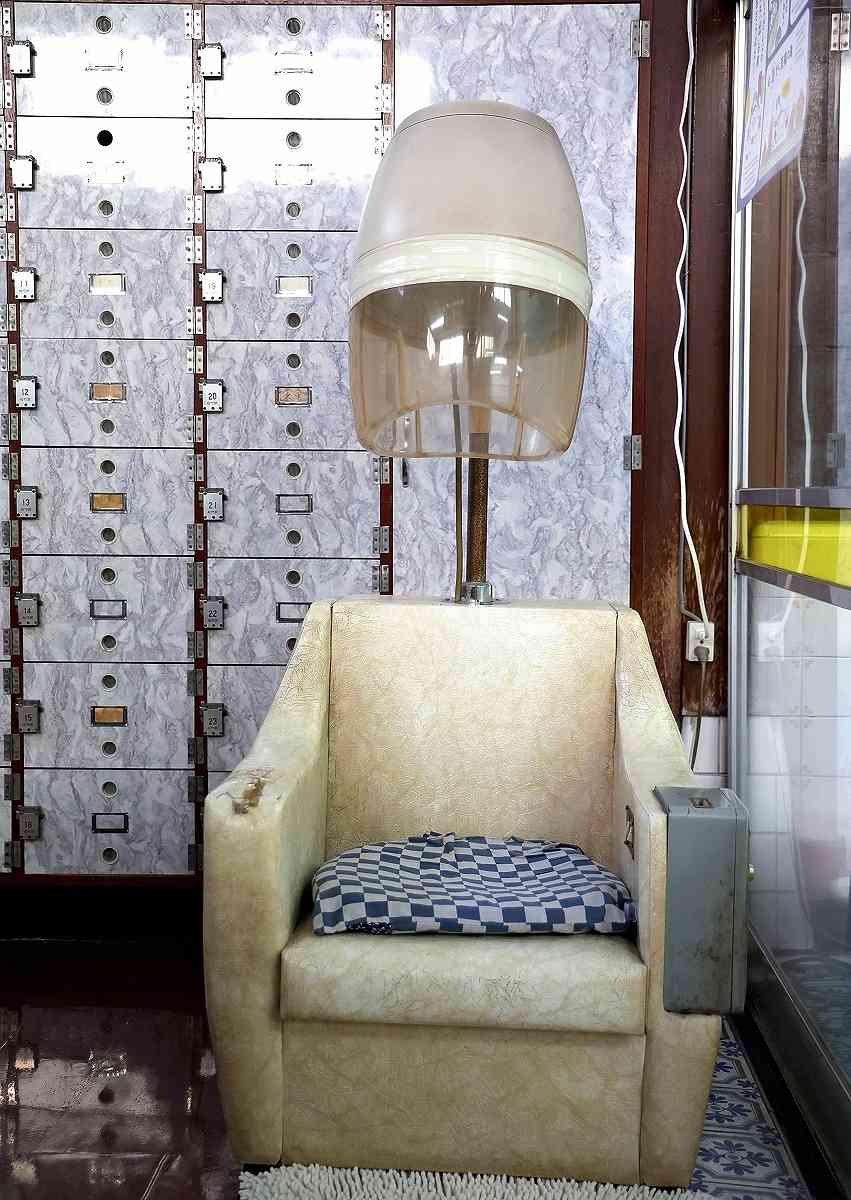
An old-fashioned hair dryer is seen in the women’s changing room.
Today, Atami-yu is frequented by local employees, students and overseas tourists, among others, while some people visit despite having bathtubs at home.
“I don’t ask people personal questions,” Akemi said with a smile. “Every day can be dramatic. Customers enjoy interacting with each other, but we have occasional trouble, too.”
Cypress wood is a main component of the building, which is characterized by a stately grid-style ceiling and thick beams. Cypress is said to be long-lasting and resistant to rot.
The building’s floors are polished to a shine, and while it is difficult to describe the facility as “spacious,” it is certainly comfortable.
“We carefully clean the changing rooms and bathrooms daily, so our guests feel good here,” Hiroshi said.
The temperature of the two bathtubs is tweaked according to the season, sitting at around 41 C and 42 C, respectively, during the summer months. A large painting of Mt. Fuji adorns one of the facility’s walls, giving rise to thoughts of both the past and the future for those relaxing in the baths’ welcoming waters.
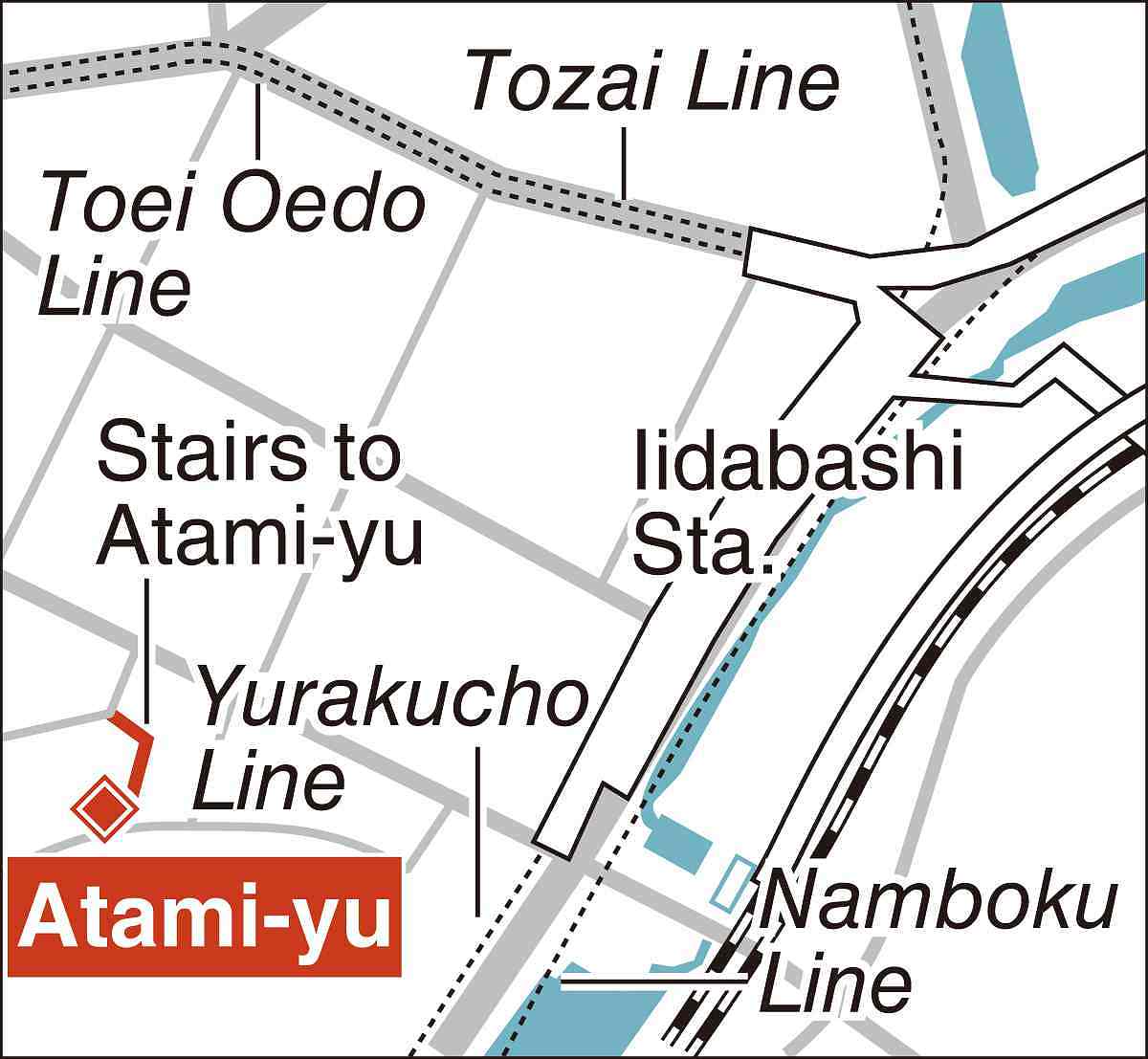
Atami-yu
Address: 3-6 Kagurazaka, Shinjuku Ward, Tokyo
Access: A 3-minute walk from Iidabashi Station on the Tokyo Metro Yurakucho and Namboku lines
Hours: 2:45 p.m. to midnight. Closed on Saturdays.
Fees: ¥520 for ages 12 and older; ¥200 for children ages 6 to 11; and ¥100 for children ages 5 or younger. Lockers can be rented for ¥500 per month.
Related Tags
"Features" POPULAR ARTICLE
-

Sanrio to Open Museum in Yamanashi Pref. Dedicated to Founder, Exhibits Include Hello Kitty, Other Characters
-

Autumn Foliage Surrounds Visitors to Tokyo’s Showa Kinen Park
-

My Daughter No Longer Speaks to Me, But I Want to See Her and My Grandchild
-

Kumamoto: Public Bath Refurbished as Library Where You Can Chat, Take Photos
-

Frozen Vegetables: Demand Rises for Convenient, Tasty Domestic Produce
JN ACCESS RANKING
-

Tokyo Economic Security Forum to Hold Inaugural Meeting Amid Tense Global Environment
-

Keidanren Chairman Yoshinobu Tsutsui Visits Kashiwazaki-Kariwa Nuclear Power Plant; Inspects New Emergency Safety System
-

Imports of Rare Earths from China Facing Delays, May Be Caused by Deterioration of Japan-China Relations
-

University of Tokyo Professor Discusses Japanese Economic Security in Interview Ahead of Forum
-

Japan Pulls out of Vietnam Nuclear Project, Complicating Hanoi’s Power Plans

























